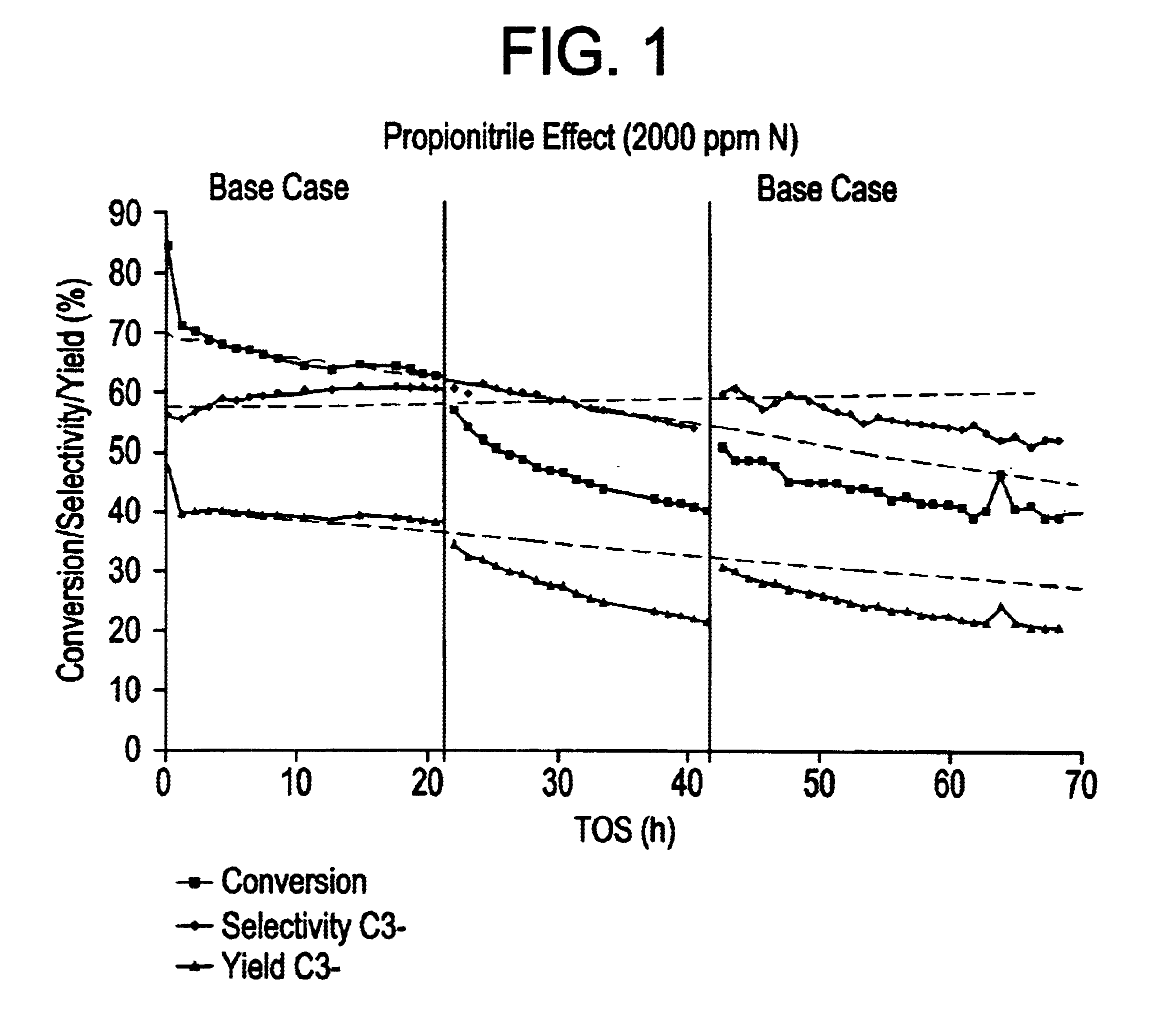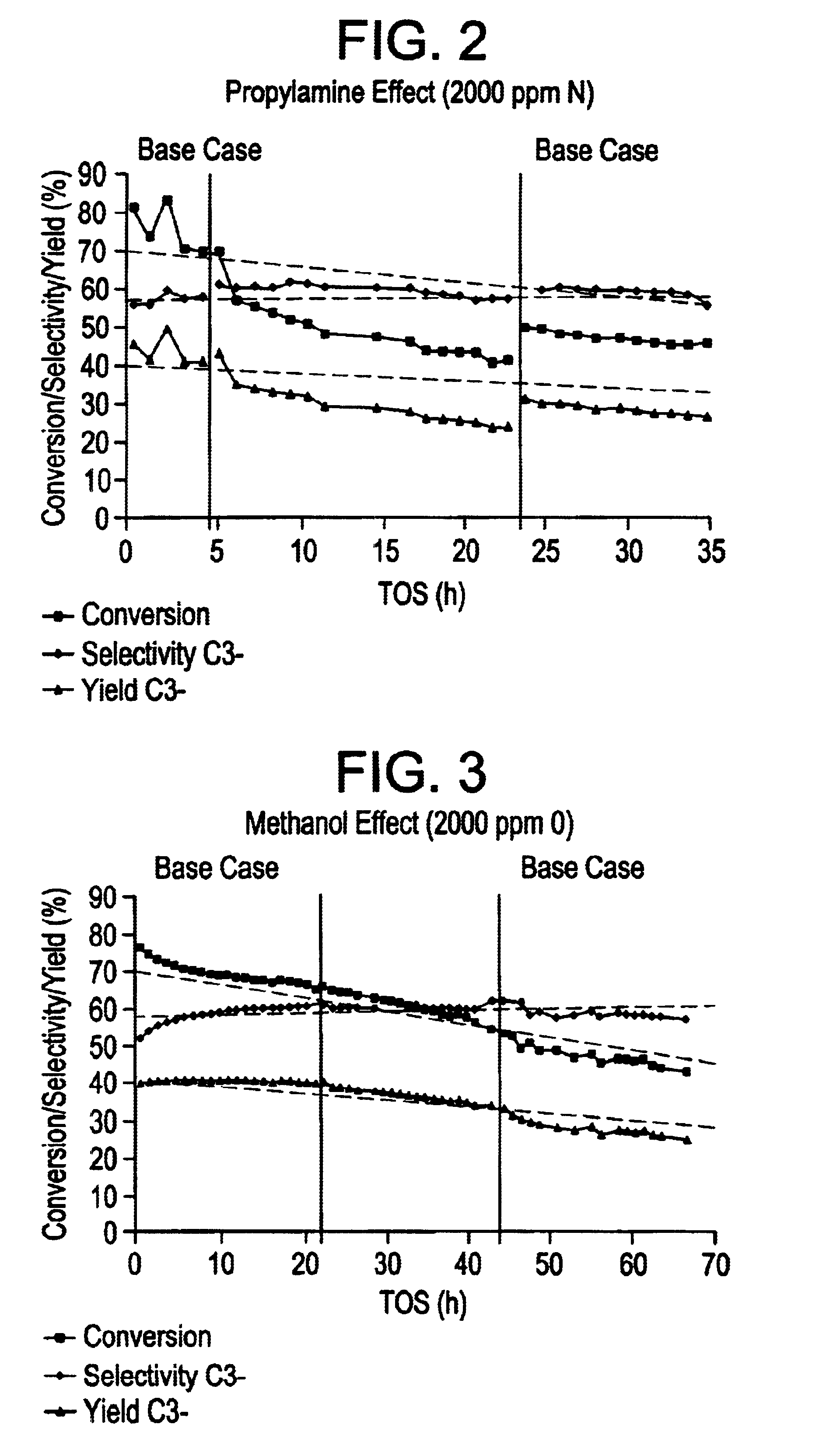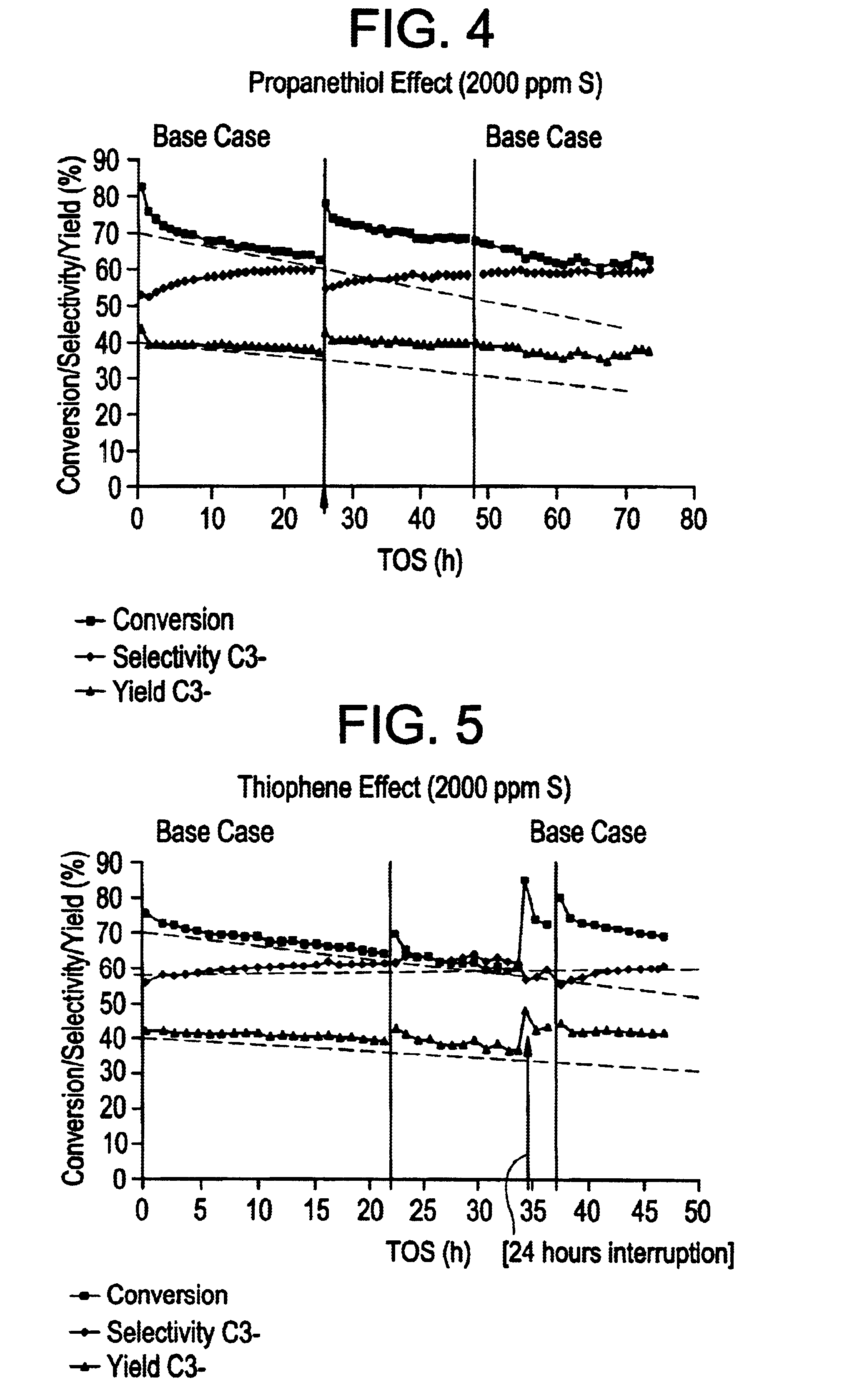Production of olefins
a technology of olefins and olefins, which is applied in the direction of hydrocarbon oil treatment products, hydrocarbon by metathesis reaction, physical/chemical process catalysts, etc., can solve the problems of low yield, low stability of crystalline silicate catalysts, and unstable conversion against tim
- Summary
- Abstract
- Description
- Claims
- Application Information
AI Technical Summary
Benefits of technology
Problems solved by technology
Method used
Image
Examples
Embodiment Construction
In this Example, a number of. runs wherein 1-hexene was catalytically cracked to produce inter alia propylene in the effluent were carried out using a silicalite catalyst. In order to demonstrate by simulation that the selective catalytic cracking process was operable when the olefinic feedstock stream contained at least one sulphur-,nitrogen- and / or oxygen-containing impurity, heteroatom impurity species were introduced into the 1-hexene synthetic feed prior to the catalytic cracking process in order to simulate such poisons.
In the catalytic cracking process, the catalyst comprised a silicalite catalyst available in commerce from the company UOP Molecular Sieve Plant under the trade name S115. The catalyst had been extruded to form an extrudate of silicalite formulated with silica binder, the formulated silicalite containing 50 wt % silicalite. The catalyst was subjected to a steaming step and a de-alumination step using EDTA as described hereinbelow.
Specifically, the S115 silicali...
PUM
| Property | Measurement | Unit |
|---|---|---|
| Fraction | aaaaa | aaaaa |
| Fraction | aaaaa | aaaaa |
| Partial pressure | aaaaa | aaaaa |
Abstract
Description
Claims
Application Information
 Login to View More
Login to View More - R&D
- Intellectual Property
- Life Sciences
- Materials
- Tech Scout
- Unparalleled Data Quality
- Higher Quality Content
- 60% Fewer Hallucinations
Browse by: Latest US Patents, China's latest patents, Technical Efficacy Thesaurus, Application Domain, Technology Topic, Popular Technical Reports.
© 2025 PatSnap. All rights reserved.Legal|Privacy policy|Modern Slavery Act Transparency Statement|Sitemap|About US| Contact US: help@patsnap.com



